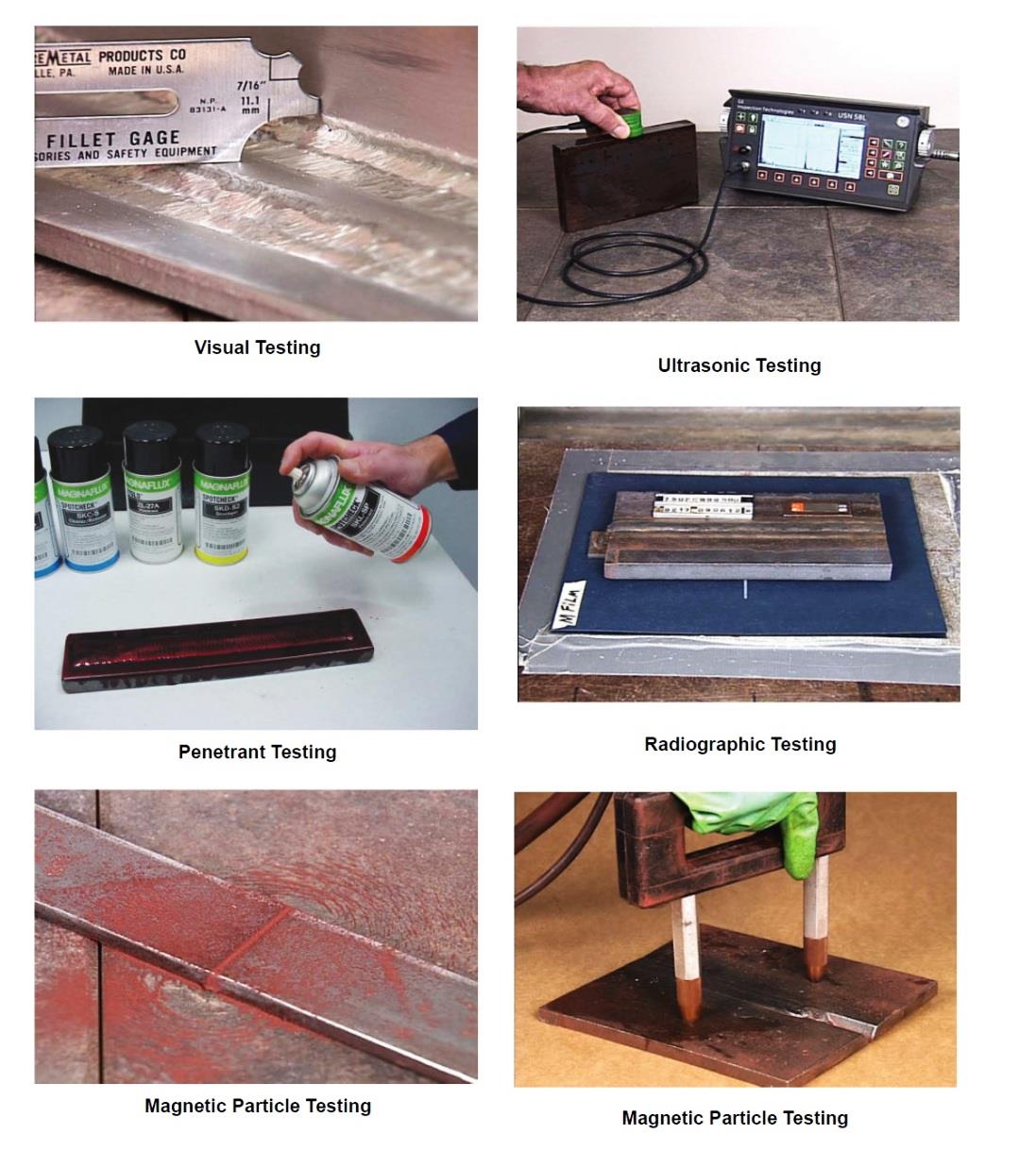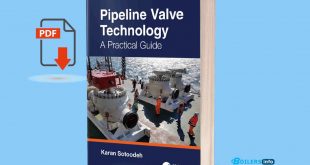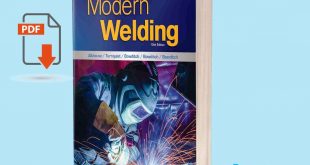Nondestructive Testing (NDT) is a group of inspection techniques used to evaluate the properties of a material, component, or system without causing damage to the object being tested. Here are some common NDT methods:
- Ultrasonic Testing (UT)
- Radiographic Testing (RT)
- Magnetic Particle Testing (MPT)
- Liquid Penetrant Testing (LPT)
- Eddy Current Testing (ECT)
- Visual Testing (VT)
- Infrared Thermography (IRT)
- Acoustic Emission Testing (AET)
- X-ray Computed Tomography (CT)
- Digital Radiography (DR)
- Magnetic Flux Leakage (MFL)
- Guided Wave Testing (GWT)
- Microwave Testing (MT)
- Time-of-Flight Diffraction (TOFD)
- Shearography
- Laser Interferometry
- Pulsed Eddy Current Testing (PECT)
These NDT methods are most commonly used across various industries such as aerospace, automotive, construction, manufacturing, and more to ensure the safety and quality of components and systems.

Ultrasonic Testing (UT): Ultrasonic Testing (UT) is a widely used NDT method that relies on high-frequency sound waves to detect and locate internal defects in materials. UT can be used on a variety of materials, including metals, plastics, ceramics, and composites. In UT, a transducer is used to generate high-frequency sound waves that are directed into the material being tested. The sound waves propagate through the material until they encounter a boundary between different materials or a defect, at which point they are reflected back to the transducer. The reflected sound waves are then analyzed by the UT instrument to determine the size, location, and orientation of any defects or changes in thickness. UT is commonly used in industries such as aerospace, automotive, and manufacturing to ensure the quality and safety of components and structures. It is also often used for thickness measurements in materials such as pipes, tanks, and pressure vessels, as it can accurately measure the thickness of a material without damaging it.
Radiographic Testing (RT): Radiographic Testing (RT) is an NDT method that uses X-rays or gamma rays to create an image of the internal structure of a material, which can reveal cracks, voids, and other flaws. RT is commonly used in the aerospace, oil and gas, and automotive industries to inspect welds, castings, and other components. In RT, a radiation source is used to generate X-rays or gamma rays, which are directed through the material being tested onto a film or digital detector. The radiation is absorbed differently by different materials, creating an image that reveals internal structures and any defects or anomalies.
Magnetic Particle Testing (MPT): Magnetic Particle Testing (MPT) is an NDT method that uses magnetic fields and iron particles to locate surface and near-surface defects in ferromagnetic materials. MPT is commonly used to inspect welds, castings, forgings, and other components in the aerospace, oil and gas, and automotive industries. In MPT, a magnetic field is applied to the material being tested, and iron particles are then applied to the surface. The particles accumulate at areas of magnetic flux leakage, indicating the presence of a defect or flaw.
Liquid Penetrant Testing (LPT): Liquid Penetrant Testing (LPT), also known as Dye Penetrant Inspection (DPI), is a NDT method that involves applying a liquid dye or fluorescent penetrant to a surface, which can reveal surface cracks and other defects when the penetrant is drawn into the defect by capillary action. LPT is commonly used to inspect castings, forgings, and other components in the aerospace, automotive, and manufacturing industries. In LPT, the surface to be tested is first cleaned and then coated with a penetrant. After a specified time, the excess penetrant is removed, and a developer is applied, which draws the penetrant out of any surface defects, making them visible.
Eddy Current Testing (ECT): Eddy Current Testing (ECT) is an NDT method that uses electromagnetic induction to detect surface and near-surface defects and measure conductivity and other properties of conductive materials. ECT is commonly used in the aerospace, automotive, and manufacturing industries to inspect materials such as aluminum, copper, and steel. In ECT, an alternating current is applied to a coil or probe, which creates a magnetic field that induces eddy currents in the material being tested. Any changes in the material’s electrical conductivity or magnetic properties can then be detected and analyzed by the ECT instrument to identify defects or changes in material properties.
Visual Testing (VT): Visual Testing (VT) is the oldest and most basic of all the NDT methods. It involves a visual inspection of the surface or structure of a component to detect any visible defects, such as cracks, corrosion, or deformation. VT can be conducted with the naked eye or with the aid of various tools, such as magnifying glasses, borescopes, or video cameras. VT is a low-cost and quick method of inspecting components, but it is limited by the inspector’s ability to see and recognize defects, and it cannot detect internal or subsurface defects. VT is commonly used as a first-line inspection method, and it is often used in conjunction with other NDT methods to ensure comprehensive inspections.
Infrared Thermography (IRT): is a non-destructive testing (NDT) technique that uses infrared cameras to detect and measure thermal energy emitted from the surface of an object. IRT is a powerful tool for detecting defects, such as cracks, voids, and delaminations, in a wide range of materials including metals, composites, and ceramics.
The principle behind IRT is that all objects emit electromagnetic radiation in the form of heat. By measuring the temperature of an object’s surface, an infrared camera can produce a thermal image that shows the distribution of heat across the surface. This can reveal hidden defects or variations in material properties that may not be visible to the naked eye.
IRT is used in a variety of industries, including aerospace, automotive, construction, and electrical. In the aerospace industry, for example, IRT is used to detect defects in aircraft structures, engines, and components. In the automotive industry, IRT is used to detect defects in engine parts, brakes, and tires. In the construction industry, IRT is used to detect energy leaks in buildings and to monitor the condition of building materials.
Overall, IRT is a versatile and powerful NDT technique that can provide valuable insights into the condition of materials and structures, and can help prevent failures and accidents.
- Introduction to nondestructive testing a training Guide
- Question and answer For Radiographic Testing Method Levels I, II, and III
- Question and answer For UT Levels I, II, and III
- Question and Answer For Magnetic Particle Testing Method Levels I, II, and III
- Question and answer For Liquid Penetrant Testing Method Levels I, II, and III
- NDT Nondestructive Testing Handbook
- Welding And Fabrication Books
 Boilersinfo Boiler and Mechanical Power Digital Library
Boilersinfo Boiler and Mechanical Power Digital Library








